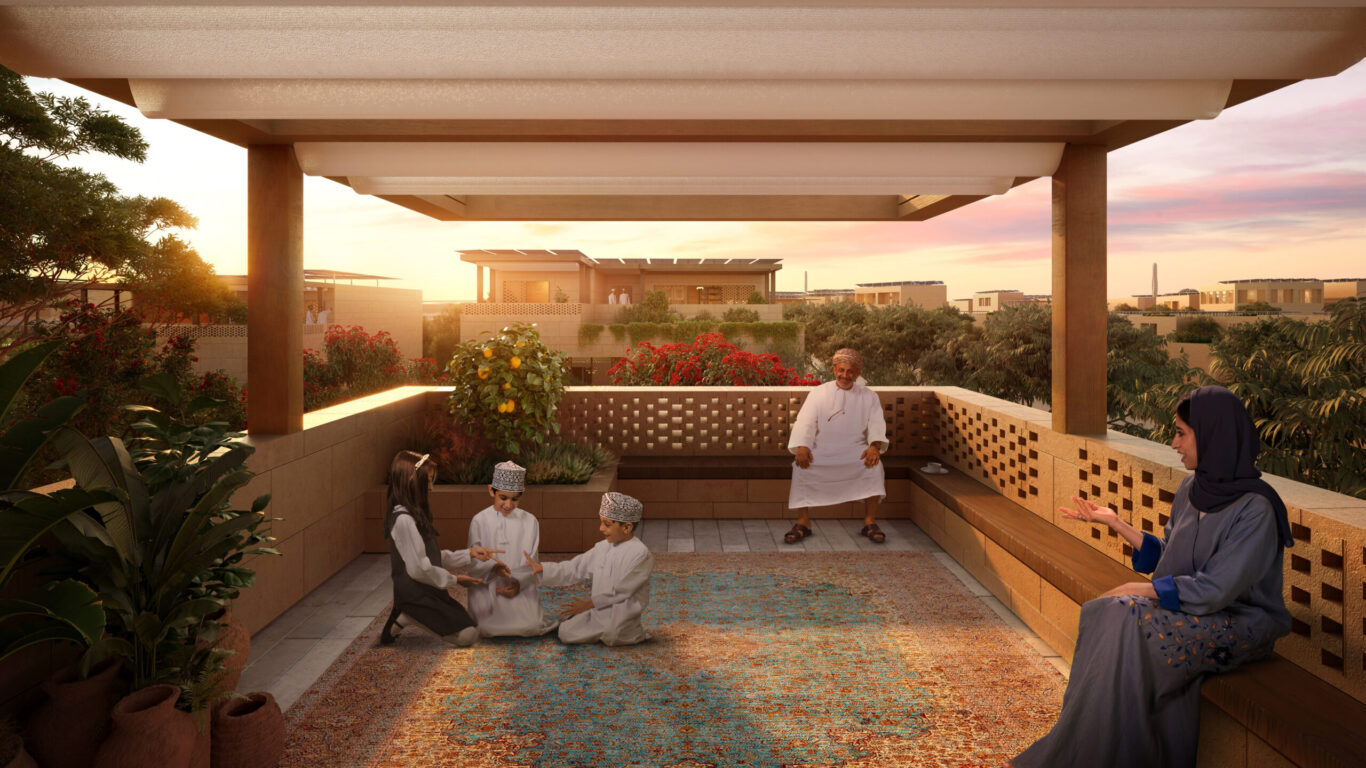An ambitious design for Oman’s future
Sultan Haitham City is the first project within a larger program that Oman’s Ministry of Housing and Urban Planning is undertaking to implement a paradigm shift in the country’s urban development. As part of Oman Vision 2040, the country’s strategic long-term vision, the project is designed to accommodate 100,000 residents of Muscat’s growing population made up of locals, expatriates, and visitors.

For SOM, the opportunity to work across different disciplines and scales to realize an entirely new city chimed naturally with our interdisciplinary approach. Interpreting the Ministry’s twelve core attributes for the new city—inclusive, affordable, safe, compact, accessible, comfortable, robust, efficient, circular, healthy, smart, and lovable—SOM’s vision for Sultan Haitham City comprises over 2.9 million square meters of vibrant public space, 20,000 new homes of different scales and types, and smart urban mobility across a total 14.8 million square meters.









